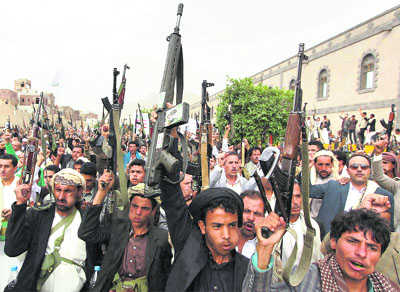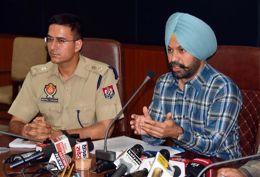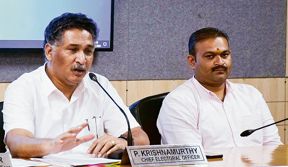
In the absence of alternatives, militant Islamists became the flag-bearers against the status quo.
Patrick Cockburn
Arab Spring was always going to be a misleading phrase. It suggested a peaceful transition from authoritarianism to democracy similar to that from communism in Eastern Europe. The misnomer implied an over-simplified view of the political ingredients that produced the protests and uprisings of 2011 and over-optimistic expectations about their outcome.
Five years later it is clear that the result has been calamitous, leading to wars or increased repression in five of the six countries where the Arab Spring principally took place. Civil wars in Syria, Libya and Yemen show no sign of ending. In Egypt and Bahrain, autocracy is far greater and civil liberties far less. Only in Tunisia, which set off the Spring, do people have greater rights than they did before.
What went so disastrously wrong? Some failed because the other side was too strong – Bahrain’s Sunni monarchy crushed the Shia majority’s demands for democratic rights. Saudi Arabia sent in troops and Western protests were feeble in sharp contrast to vocal Western denunciations of Bashar al-Assad’s brutal suppression of the uprising by the Sunni Arab majority. The Syrian war had social, political and sectarian roots but it was the sectarian element that predominated.
Why did intolerant and extreme Islam trump secular democracy? It did so because nationalism and socialism were discredited as the slogans of the old regimes. Often military regimes had transmuted into police states controlled by a single ruling family. Islamic movements were the main channel for dissent and opposition to the status quo, but they had little idea how to replace it. This became evident in Egypt where the protesters never succeeded in taking over the state and the Muslim Brotherhood found that winning elections did not bring real power.
The protest movements at the beginning of 2011 presented themselves as progressive in terms of political and civil liberty and this belief was genuine. But there had been a real change in the balance of power in the Arab world over the previous 30 years. Saudi Arabia and the Gulf monarchies have taken over the leadership from secular nationalist states. It was one of the paradoxes of the Arab Spring that rebels supposedly seeking to end dictatorships in Syria and Libya were supported by absolute monarchies from the Gulf.
The West played a role in supporting uprisings against leaders they wanted to see displaced such as Gaddafi and Assad. But they gave extraordinarily little thought to what would replace these regimes. They did not see that the Syrian civil war was bound to destabilise Iraq and lead to a resumption of the Sunni-Shia war there.
An even grosser miscalculation was not to see that the armed opposition in Syria and Iraq was becoming dominated by extreme jihadis. The US and its allies long claimed that there was a moderate non-sectarian armed opposition in Syria. This was largely mythical. In areas where IS and non-IS rebels ruled they were as brutal as the government in Damascus. The non-sectarian opposition fled abroad, fell silent or was killed and it was the most militarised and fanatical Islamic movements that flourished in conditions of permanent violence.
The Independent
The Report card
MOROCCO
Concessions by King Mohammed VI, including a referendum in 2011 led to changes in the constitution and helped ensure that protests fizzled out by end of 2012.
TUNISIA
The birthplace of the Arab Spring is its one success story. After two free elections, the country is largely peaceful although up to 300 people died during the overthrow of President Ben Ali in 2011. Terrorist attacks in 2015 have cast a shadow, and threaten tourism.
LIBYA
Hopes raised by the overthrow of Colonel Gaddafi in 2011 were belied. An elected parliament took power in 2012 but fled to another city as a rival government seized Tripoli. Much of the country is now under control of neither, with the IS established in some parts.
EGYPT
Up to 900 killed in the run up to the fall of President Hosni Mubarak in 2011. The army ousted his successor from the Muslim Brotherhood in 2013. Nearly 1,000 people were killed in the protests that followed. A new President was elected in 2014; hundreds of Brotherhood members have since been sentenced to death.
SYRIA
A few weeks of hope in 2011. Since then, endless catastrophe. Up to 3.5 lakh people have died, 44 lakh are refugees, IS controls swathes of the country, moderate rebels massacred, the Assad regime remains (partly) in place, and foreign intervention has not slowed the slaughter.
IRAQ
Minor protests in 2011 and major ones in 2012-13. The electoral defeat of Nouri al-Maliki in 2014 came too late; by then, the IS was running amok. Despite recent gains, large regions are under Isis control.
SAUDI ARABIA
Kept a lid on domestic discontent by a mix of authoritarianism and state largesse. Helped crush protest in Bahrain. Military intervention in Yemen has been inconclusive. Plummeting oil prices and a change of monarch have destabilised the regime.
BAHRAIN
Around 30 died when protests against the ruling family were suppressed, with Saudi help, in early 2011. The Sunni regime has since jailed thousands in the crackdown on its majority Shia population.
YEMEN
President Saleh was forced. An uprising by Shia rebels led by al-Houthi, which began in 2014, led to the flight of Saleh’s successor in 2015. The Iran-aligned Houthis now control the capital but are under attack from a Saudi-led Sunni coalition.

























